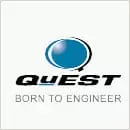Oil and gas disasters tend to be catastrophic. Aging infrastructure and associated deterioration due to corrosion or other environmental factors, wave forces and other factors affect the structural integrity of rigs. Leakage results from failed infrastructure. Human/organization causes for oil and gas disasters such as errors or omissions during the design phase (faulty assessment of wave conditions or load calculations, strength formulation, lack of compliance with design codes, fabrication and operation specs) compound the problem and increase the magnitude of the disaster, even reaching catastrophic proportions. According to the Bureau of Labor Statistics, the oil and gas fatality rate is 7.6 times higher than the all-industry rate of 3.2 deaths per 100,000 workers.
Recent occurrences of oil spills and other oil field disasters have added fuel to the already raging fire of the environmental impact due to oil and gas. To give us an idea of the extent of impact of an oil spill, here are couple of examples. As lately as 2012, an estimated 125 barrels, or 20 cubic meters, of oil flowed out of the leak, along with 1,600kg of gas, from the installation on the Ula field at the southern end of the Norwegian continental shelf in a single oil spill incident. The Deepwater Horizon oil spill in the Gulf of Mexico followed by an explosion and sinking of the rig, considered as the largest accidental marine spill in the history of oil and gas disasters, resulted in loss of 11 human lives, discharged 4.9 million barrels, and a sea-floor leak flowed for 87 days before it could be finally checked by capping the well.
As a result there is a growing need for and greater emphasis laid on reliability engineering. Reliability engineering can throw light on how equipment can fail and how they can be designed, manufactured, installed, operated and maintained to minimize the risk of failure. At concept selection and front end engineering stages, a system architecture that meets reliability requirements needs to be defined. System robustness, fault tolerance and redundancy in the system need to be assessed from earlier failures and then incorporated into the design, all the while allowing for human and process errors. Potential failure mechanisms including common causes are identified and addressed. At the subsystem, assembly levels parameters such as improved shape, selection of materials come into play to generate damage tolerant designs and control quality in manufacture. Attention to interfaces and assessing equipment installation conditions can be performed during the testing and installation stage. Proactive monitoring, assessment of performance degradation and preventive maintenance happen on a continued basis.
QuEST’s years of experience in simulation, modeling, fatigue and damage tolerance analysis, design expertise, stringent quality processes, and checks and balances has helped the Oil and Gas industry to combat some such safety issues.
Here’s a case study:
Field Failure Investigation and Resolution – Upstream Equipment
• The Challenge
A customer required QuEST to perform field failure investigation and help out in problem resolution. Methodologies had to be developed for simulation of hyper-elastic material and that of coating substrate interface behavior.
• What did QuEST do?
QuEST created finite element models with appropriate material modeling for metallic, non-metallic and hyper-elastic components. We then applied loads and constraints and reviewed model behavior in terms of displacements, load paths and then performed model integrity checks. Subsequently, a correlation between field failure and simulation was established and improvements were recommended to the customer.
• Customer Benefits
QuEST could offer cost effective solutions for field failure problems of our oil and gas customer. QuEST methodologies for simulation of a hyper-elastic material and the prediction of interface behavior of a coating substrate benefited the customer tremendously.
